

| The lower choir of the church is the final resting place of Vasco da Gama (inside main entrance on the left) and of Luís de Camões (inside main entrance on the right); both tombs were designed by the nineteenth sculptor Costa Mota. Vasco da Gama had set sail from Bélem in 1497 to discover India and later, in 1524, became Portuguese viceroy in India, nominated by the new King of Portugal, King John III. However, within three months of assuming duties he became ill and died in Cochin on December 1524. Initially he was buried there but later his remains were returned to Portugal and taken to the Convent of Our Lady of Relics at Vidigueira. Only in 1880 were his remains and those of the poet Luis Camões moved to the Monastery of Jerónimos. With these two tombs (and the royal tombs in the choir) the church also became a patriotic shrine and kind of national pantheon. | ||
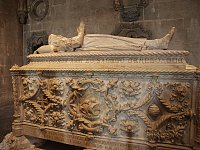
|
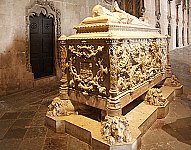
|
Costa Mota has purposely adopted neo-Manueline stylistic elements in the design so that the tomb and its setting in the Manueline church are harmonious. |
| Details on the side of the sarcophagus relate to Vasco da Gama's voyages--a sailing vessel in the center, the cross of the Order of Christ, and the armillary sphere. (See also the Belem tower for similar imagery.) The lion is associated with Saint Jerome, the order of course for whom the monastery was built. | 
|
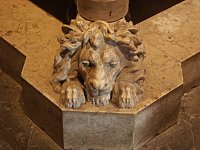
|
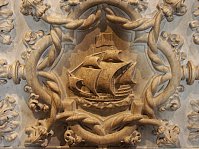
|
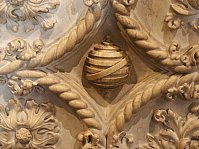
|
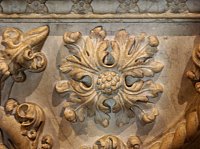
|
Return to page 1--views of the monastery.
 Click here to return to index of art historical sites.
Click here to return to index of art historical sites.
 Click here to return to index of artists and architects.
Click here to return to index of artists and architects.
 Click here to return to chronological index.
Click here to return to chronological index.
 Click here to see the home page of Bluffton University.
Click here to see the home page of Bluffton University.
